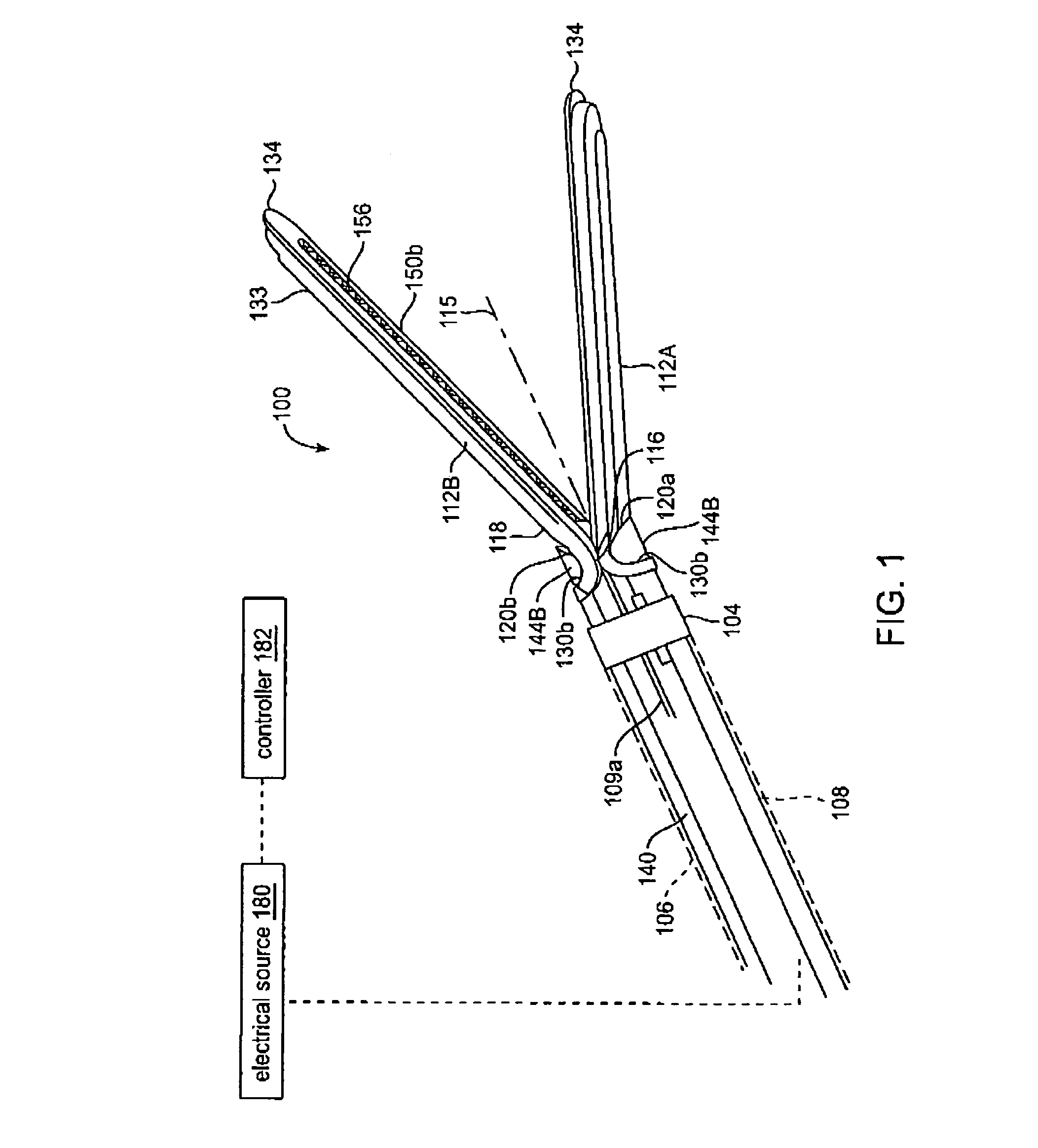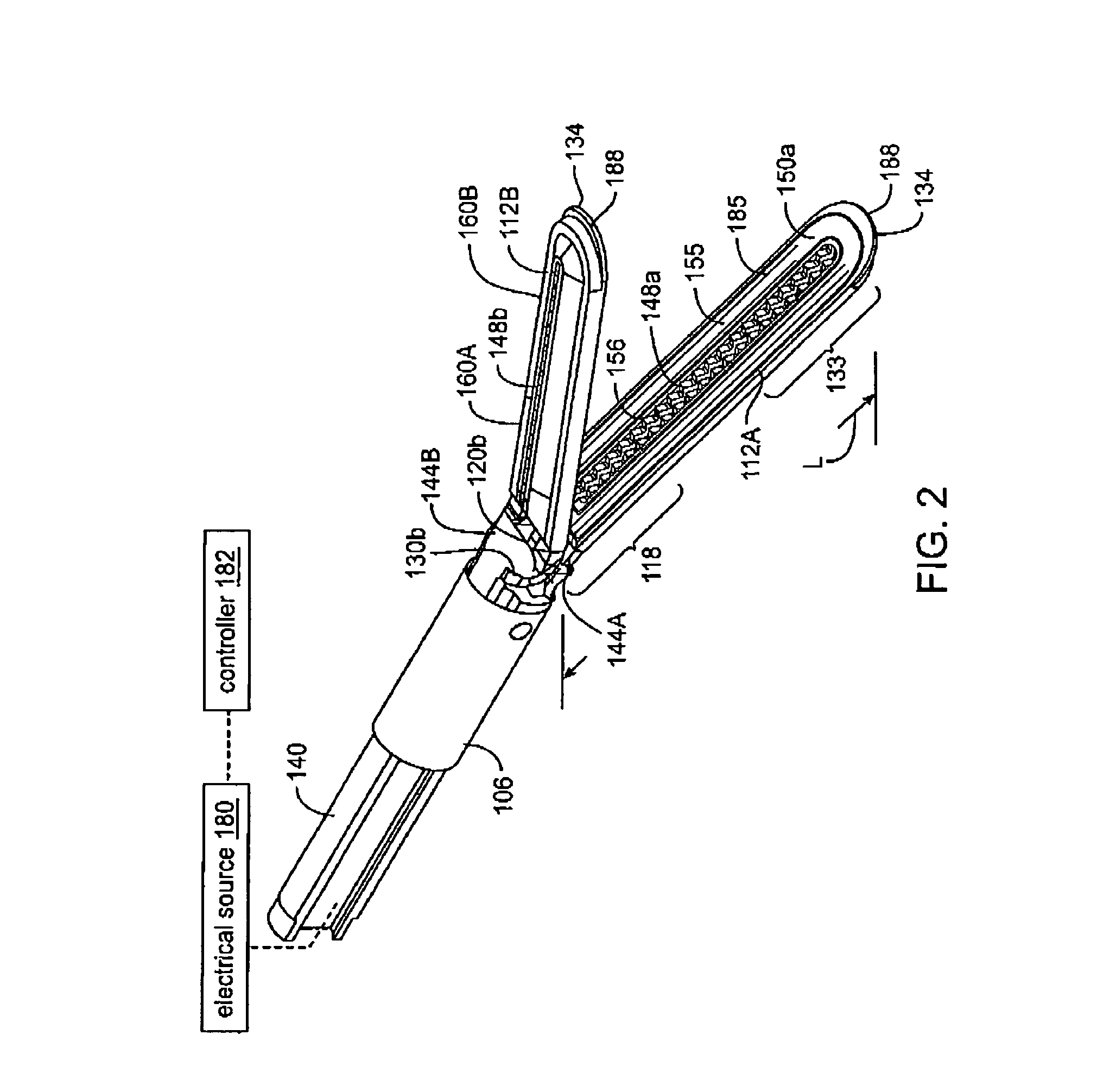Jaw structure for electrosurgical instrument and method of use
a jaw structure and electrosurgical technology, applied in the field of medical devices and techniques, can solve the problems of ineffective bipolar instruments in sealing or welding many types of tissues, non-uniform sealing of tissue, and rf jaws that engage opposing sides of tissue volume, so as to reduce rf energy application, prevent any substantial dehydration of tissue, and increase resistance
- Summary
- Abstract
- Description
- Claims
- Application Information
AI Technical Summary
Benefits of technology
Problems solved by technology
Method used
Image
Examples
Embodiment Construction
[0032]1. Type “A” jaw assembly. An exemplary Type “A” working end and jaw assembly 100 of a surgical grasping instrument is illustrated in FIGS. 1 and 2, which is adapted for transecting captured tissue and contemporaneous welding of the captured tissue with Rf energy delivery. The jaw assembly 100 is carried at the distal end 104 of an introducer sleeve member 106 that can be rigid, articulatable or deflectable in any suitable diameter. For example, the introducer sleeve portion 106 can have a diameter ranging from about 2 mm. to 20 mm. to cooperate with cannulae in endoscopic surgeries or for use in open surgical procedures. The introducer portion 106 extends from a proximal handle (not shown). The handle can be any type of pistol-grip or other type of handle known in the art that carries actuator levers, triggers or sliders for actuating the jaws as will be disclosed below, and need not be described in further detail. The introducer sleeve portion 106 has a bore 108 extending the...
PUM
| Property | Measurement | Unit |
|---|---|---|
| temperature | aaaaa | aaaaa |
| diameter | aaaaa | aaaaa |
| length | aaaaa | aaaaa |
Abstract
Description
Claims
Application Information
 Login to View More
Login to View More - R&D
- Intellectual Property
- Life Sciences
- Materials
- Tech Scout
- Unparalleled Data Quality
- Higher Quality Content
- 60% Fewer Hallucinations
Browse by: Latest US Patents, China's latest patents, Technical Efficacy Thesaurus, Application Domain, Technology Topic, Popular Technical Reports.
© 2025 PatSnap. All rights reserved.Legal|Privacy policy|Modern Slavery Act Transparency Statement|Sitemap|About US| Contact US: help@patsnap.com



